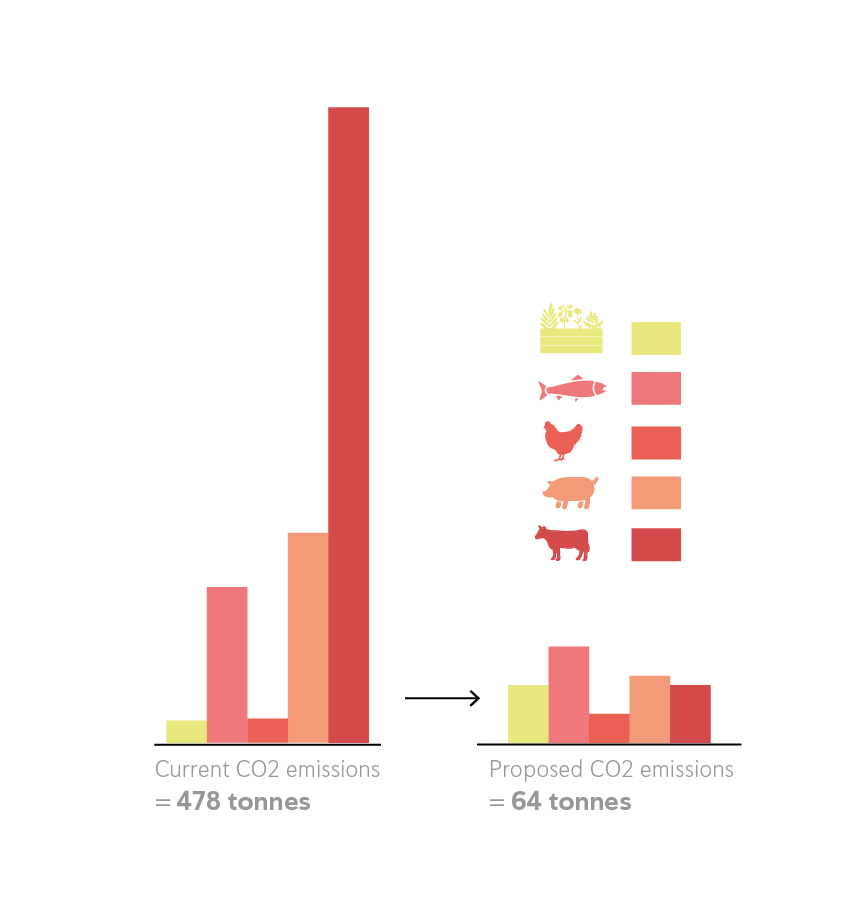Decarbonizing built environments: During this seminar, over the course of a few weeks, it was developed speculative approaches in built environments to minimize the carbon footprint of architectural spaces considering three main aspects: Employing effective carbon capture techniques, Shifting to renewable sources of energy, and Analyzing consumption habits. In this project, we aim to examine the current food consumption and carbon emission patterns at the iconic La Boqueria market in Barcelona, so as eventually propose a conceptual strategical design that might help reduce the overall carbon emissions.
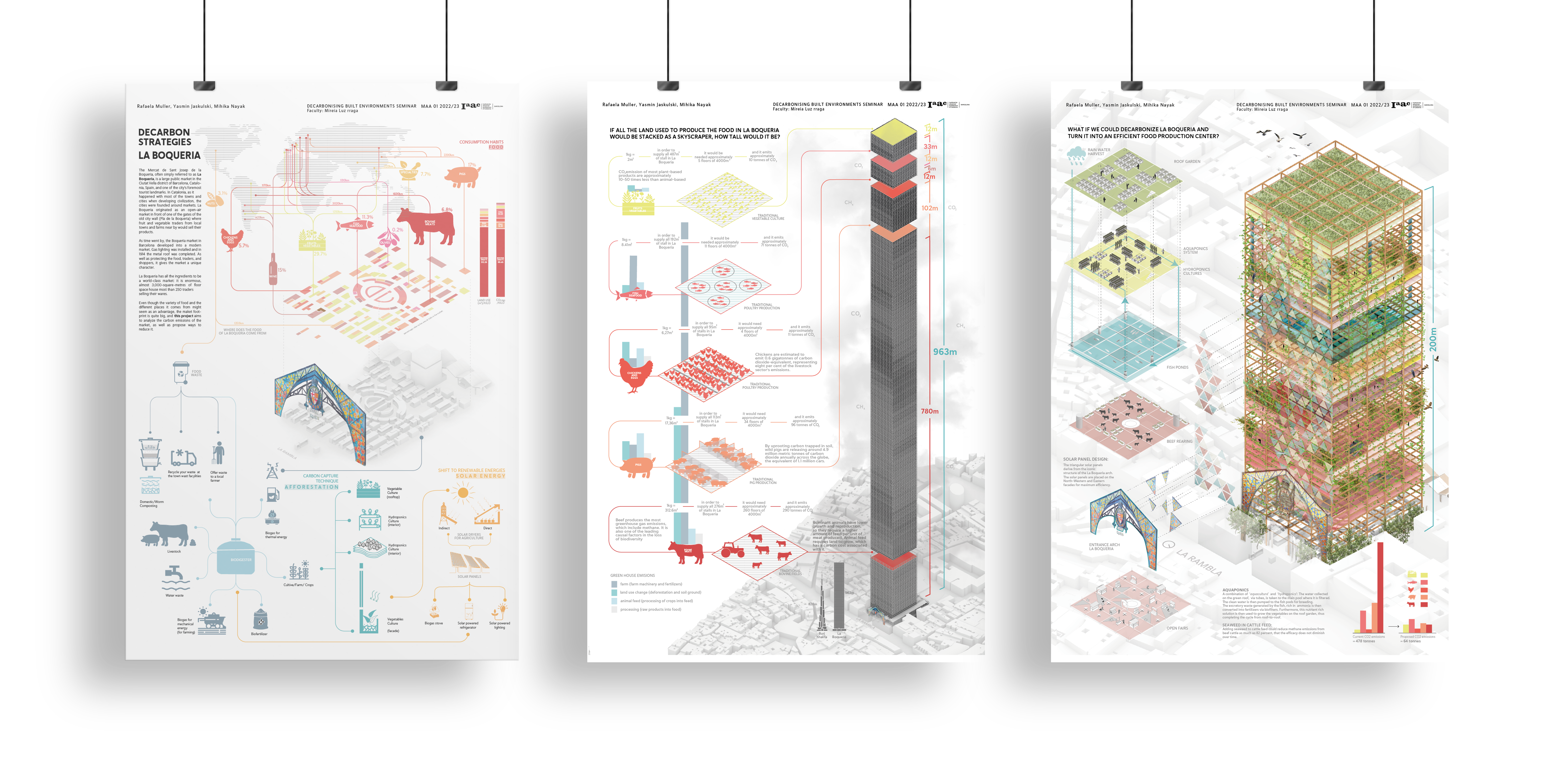
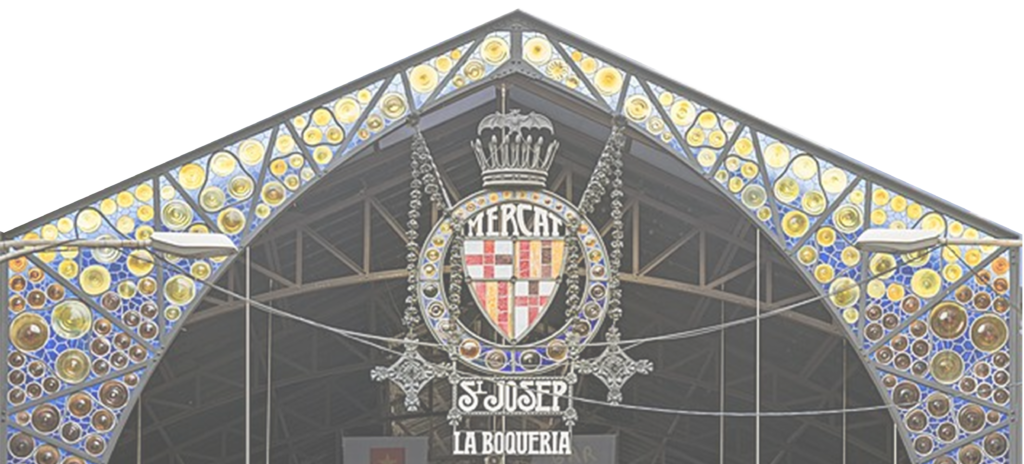
The Mercat de Sant Josep de La Boqueria, often simply referred to as La Boqueria is a large public market in the Ciutat Vella district of Barcelona, Catalonia, Spain, and one of the city’s foremost tourist landmarks, in Catalonia, as It happened with most of the towns and cities when developing civilization, the cities were founded around markets, La Boqueria originated as an open-air market in front of one of the gates of the old city wall (Pla de la Boqueria) where fruit and vegetable traders from local towns and farms nearby would sell their products. As time went by, the Boqueria market in Barcelona developed into a modern market: Gas lighting was installed and in 1914 the metal roof was completed. As well as protecting the food, traders, and shoppers, it gives the market a unique character.
La Boqueria has all the ingredients to be a world-class market: it is enormous, with almost 3000 square meters of floor space housing more than 250 traders selling their wares. Even though the variety of food and the different places it comes from might seem like an advantage, the market carbon footprint is quite big, and this project aims to analyze the carbon emission of the market, as well as propose ways to reduce it.
COSMOGRAM
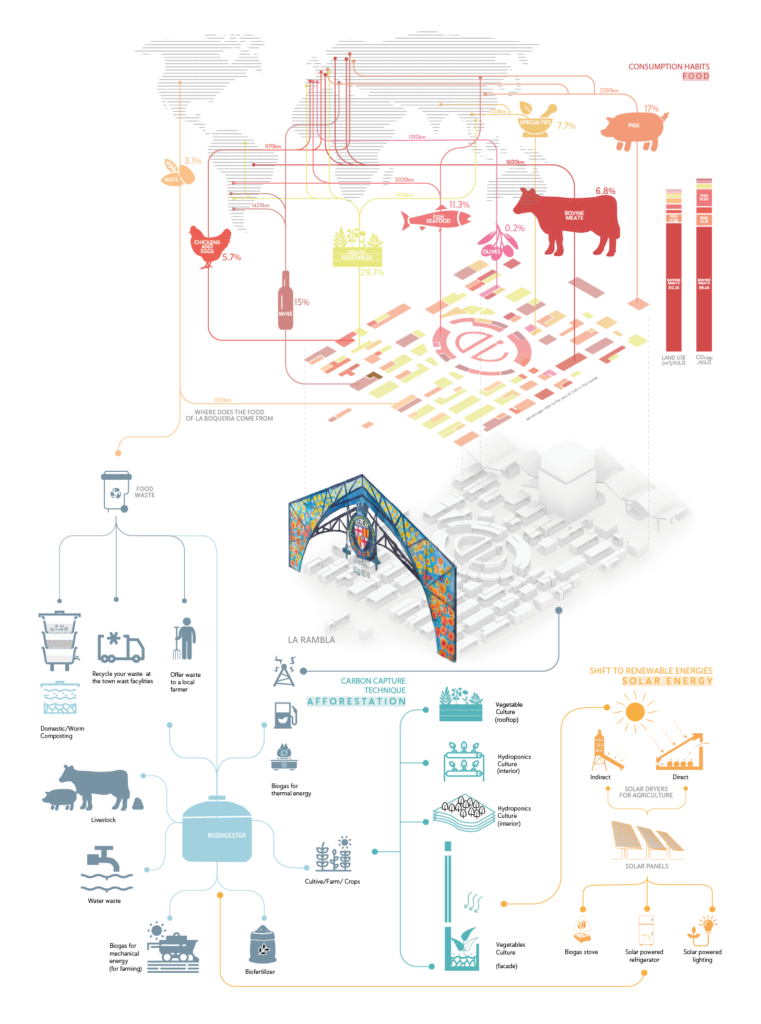
A cosmogram is a demonstrative illustration that helps link the different aspects of a topic via a diagrammatic flowchart. This cosmogram shows three important facets of the La Boqueria: Food imports, renewable energy, and carbon capture methods. With respect to food imports, the schema indicates the various products that are transported and how much carbon is emitted via land use and transportation. For the use of renewable energy and carbon capture techniques, we have proposed to make sure of the solar radiation to power the market for the former and to use afforestation in various ways for the latter.
STRATEGIC REPRESENTATION OF CURRENT LAND-USE
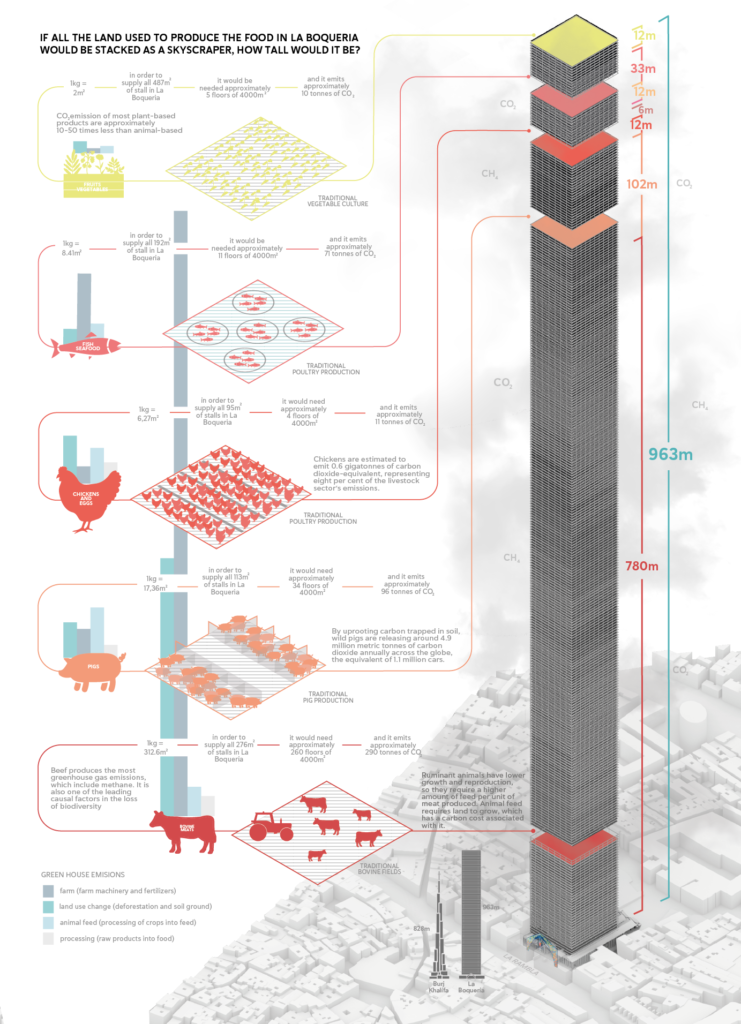
In the above conceptual diagram, the land use for cultivating the various products has been analyzed per kilogram of the product and represented in the form of floors above the footprint of La Boqueria. It has been observed that the land use for bovine rearing is the maximum, reaching up to approximately 780m in height, followed by pig and poultry farming. In total, by stacking up all the floors required to farm and raise the different products sold at La Boqueria, we arrive at a skyscraper that is 963m (~1 km) in height, even taller than the current tallest building Burj Khalifa.
DESIGN PROPOSAL
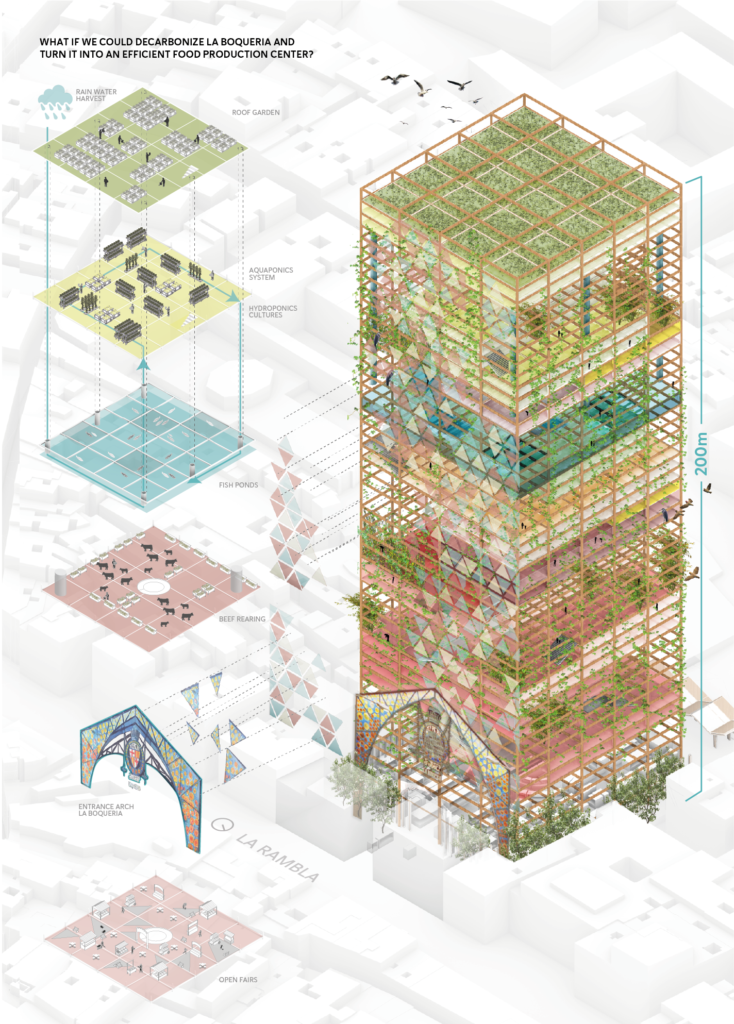
The final design proposal is that of a vertical tower that transforms the Mercat de La Boqueria into a self-sustaining entity. A timber structure encases several floors, where the produce is cultivated and reared for sale at the market. The introduction of an aquaponic system, where the water from the rooftops is filtered in the fish pools and taken back to the roof garden for vegetable cultivation, helps recycle the water and also uses the fish excretions in a positive manner. The carbon emissions from beef rearing are reduced by approximately 82% by incorporating seaweed in the cattle feed. Considering the sun path on the La Boqueria, the insertion of solar panels on the eastern facade, the design of which is derived from the geometry of the La Boqueria arch, helps absorb maximum solar radiation so as to use it effectively to power the market. Thus by instigating certain strategies and reducing the cost and CO2 emanations via transportation and processing of the produce, we can reduce the carbon emissions of La Boqueria from 478 tonnes to approximately 64 tonnes.
